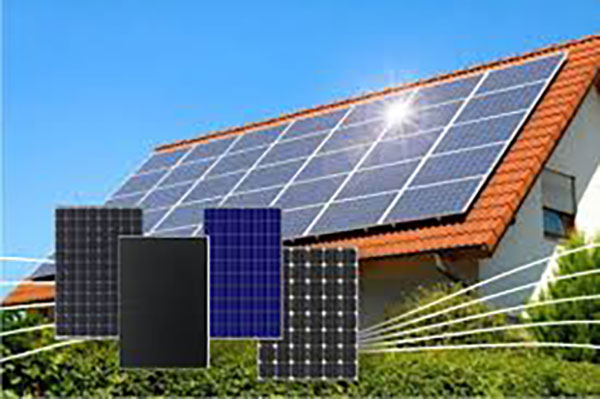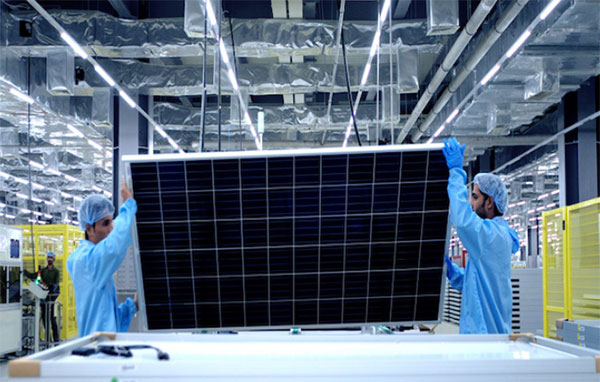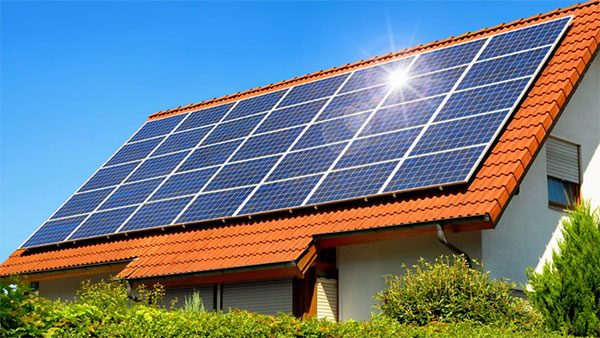Description
The best solar company varies based on individual needs, but prominent global leaders include companies like Tesla, Tongwei, Sunrun, and First Solar, depending on criteria like innovation, coverage, and customer reviews.
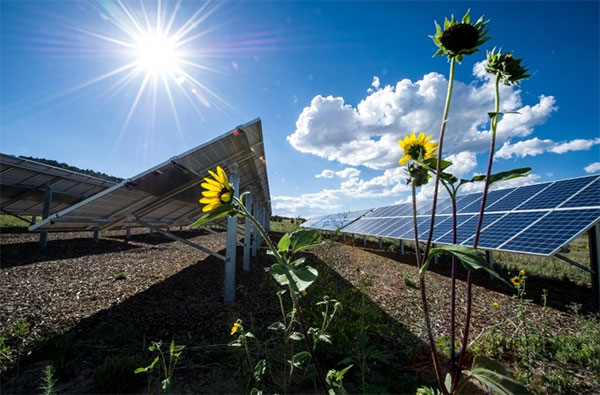
Criteria for Evaluating Solar Companies
Understanding the right criteria can play a significant role in identifying the best solar company for your needs. Each factor provides insights into the company's commitment to quality, performance, and customer satisfaction.
Efficiency of Solar Panels
- Peak Efficiency: The best solar panels currently available have an efficiency rate of around 22%. When comparing companies, it's important to consider how close their panels come to this benchmark.
- Size vs. Output: A smaller panel that produces the same amount of energy as a larger panel can indicate higher quality and efficiency. For instance, a 1.6m x 1m panel producing 320W is more efficient than a 2m x 1.5m panel producing the same power.
- Material Quality: Monocrystalline solar panels, for instance, are known to be slightly more efficient than their polycrystalline counterparts. Ensuring the panels are made of high-quality materials can lead to better energy yields.
Customer Service and Reviews
- Response Time: The best companies typically respond to inquiries within 24 hours. Quick response times indicate a company's dedication to customer satisfaction.
- Positive Reviews: While no company will have 100% positive reviews, anything above a 4.5-star rating (out of 5) on platforms like Yelp or Google can indicate excellence.
- Post-installation Support: Some of the best companies offer ongoing support and maintenance services, ensuring the system's longevity and peak performance.
Pricing and Financing Options
- Average Costs: On average, the cost of solar panels ranges from $2.50 to $3.50 per watt, depending on the region, company, and panel quality.
- Financing Flexibility: Leading companies often provide multiple financing options, including loans, leases, and power purchase agreements. For instance, a 20-year loan might come with an interest rate between 2.5% and 5%.
- Rebates and Incentives: Some companies assist customers in applying for federal, state, or local rebates, which can significantly reduce the net cost.
Warranty and Longevity of Products
- Standard Warranty: The industry standard for solar panel warranties is typically around 25 years, with some high-end panels offering up to 30 years.
- Performance Guarantee: Apart from the standard warranty, companies might guarantee a certain level of performance. For example, a panel might guarantee 90% performance at 10 years and 80% at 25 years.
- Material and Workmanship: Apart from performance, warranties should also cover aspects related to materials and workmanship, ensuring that the panels don't have any manufacturing-related defects.
While the above criteria provide a robust starting point, it's essential to conduct thorough research, considering each factor's intricacies to make the best decision.
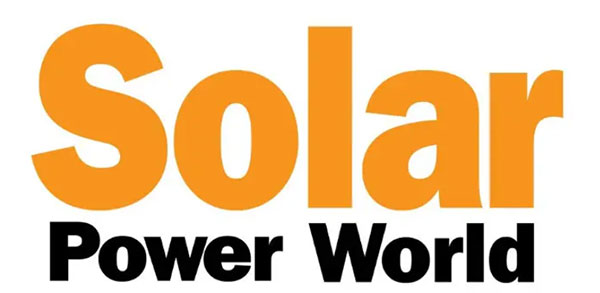
Leading Solar Companies Worldwide
Solar energy has seen an exponential rise, thanks to the global push towards sustainable energy solutions. Many companies have made significant strides in advancing solar technology and expanding its reach. However, some stand out due to their innovation, market presence, and contribution to the sector.
Top Manufacturers by Market Share
The solar industry is competitive, with many players vying for a larger slice of the market. Here's a breakdown of some top manufacturers based on their market share:
| Company |
Market Share |
Key Strengths |
| Tongwei |
7.8% |
Renowned for its high-efficiency solar cells and modules, Tongwei is a force to reckon with in the solar sector. With a commitment to innovation and sustainability, the company has carved a niche for itself. |
| JinkoSolar |
10.2% |
A giant in the solar panel manufacturing space, JinkoSolar boasts impressive efficiency in its modules and a strong global presence. |
| First Solar |
5.4% |
With a focus on thin-film solar panels, First Solar has set itself apart with its unique technology and significant market presence. |
| Trina Solar |
9.1% |
A company that's synonymous with reliability, Trina Solar offers a range of panels suitable for various applications. |
Regional Leaders and Their Impact
Different regions have their champions, companies that have not only conquered local markets but have also set standards for the industry at large.
- North America: SunPower is a leading name in the US, known for its high-quality panels with efficiencies that often exceed 22%. Their impact on the North American market is undeniable, setting benchmarks in efficiency and durability.
- Asia: Apart from the aforementioned Tongwei, companies like LONGi Solar are noteworthy. Based in China, LONGi has made significant advancements in monocrystalline silicon technology, driving down costs and enhancing efficiency.
- Europe: Q CELLS, a German-based company, dominates the European market. Their emphasis on quality and innovation has not only made them leaders in Europe but has also gained them significant market share globally.
It's crucial to recognize the value these companies bring to the solar industry. Through competition and relentless pursuit of excellence, they drive the entire sector forward, benefiting consumers and the environment alike.
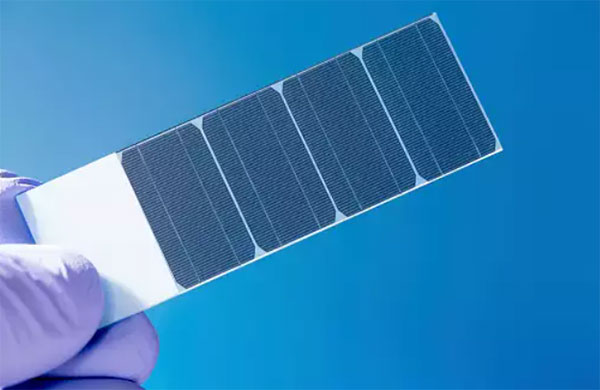
Innovations in Solar Technology
The solar industry is undergoing a remarkable transformation. As we strive for a sustainable future, new technologies and innovations continually emerge, making solar energy more efficient, accessible, and integrated than ever before.
The Latest in Solar Panel Technology
Solar panels have evolved dramatically over the years, with researchers constantly pushing the boundaries of what's possible.
- Bifacial Solar Panels: These panels capture sunlight from both their front and rear sides, increasing their energy production by up to 30%. A typical bifacial panel might produce an extra 5-10W compared to its monofacial counterpart of the same size.
- Flexible Solar Panels: Made using thin-film technology, these panels can bend, making them perfect for unconventional surfaces. They might not have the efficiency rates of crystalline panels (usually around 10-12%), but their versatility offers unique applications.
- Quantum Dot Solar Cells: A game-changing technology that's still in its infancy. Researchers believe that quantum dots could push panel efficiency well beyond the current limits, potentially reaching up to 30% or more in the coming years.
Energy Storage Solutions
Storage solutions have become the backbone of the solar industry, allowing homeowners and businesses to store excess energy for later use.
- Lithium-Ion Batteries: Currently the most popular choice, these batteries offer high energy density and long lifespans of up to 10-15 years. A typical home storage unit might offer 10 kWh of storage, enough to power most homes overnight.
- Flow Batteries: A newer technology, flow batteries can last longer and degrade slower than lithium-ion counterparts. They might be larger in size but are considered more scalable and could be a game-changer for grid-scale storage.
- Solid-State Batteries: Still in the developmental stage, these promise higher capacities, faster charging times, and enhanced safety. The potential here could revolutionize both the electric vehicle and the home energy storage industry.
Integration with Smart Homes and Grids
Modern solar setups are more than just panels and inverters; they're part of a larger integrated ecosystem.
- Smart Inverters: These devices not only convert DC power to AC but can also communicate with other devices, optimizing energy consumption and even selling excess power back to the grid at optimal times.
- Home Energy Management Systems: Think of this as the brain of a smart home. It monitors energy production, storage, and consumption, making decisions to ensure the most efficient use of power. For instance, it might decide to run heavy appliances during peak solar production hours.
- Grid Integration: Modern solar setups can communicate with the grid, drawing power during off-peak times (if needed) and supplying the grid when there's excess, ensuring optimal energy usage and cost savings.
These innovations not only make solar energy more viable but also integrate it seamlessly into our daily lives, pushing us closer to a future where clean, renewable energy is the norm.
Environmental and Economic Impact
Solar energy stands as a beacon of hope in the quest for sustainable energy solutions. Its rapid adoption is not merely a trend; it reflects a global realization of the profound environmental and economic benefits this energy source offers. Harnessing the power of the sun impacts our world on both a macro and micro scale, driving positive changes that range from individual households to entire economies.
Carbon Footprint Reduction
Switching to solar energy has a direct and significant impact on carbon emissions.
- Emissions Offset: A typical residential solar panel system can offset 3-4 tons of carbon emissions each year. That's equivalent to planting over 100 trees annually.
- Coal and Natural Gas: Solar directly reduces the demand for coal and natural gas. For every 1 kWh of solar energy produced, we prevent the release of approximately 0.92 kg of CO2 that would have resulted from coal or natural gas power sources. Over its lifetime, a single solar panel might prevent tons of CO2 emissions.
- Air Quality: Apart from CO2, burning fossil fuels releases harmful pollutants like sulfur dioxide and nitrogen oxides. Solar panels help improve air quality by reducing the reliance on these non-renewable energy sources.
Cost Savings for Consumers
While the initial investment might seem steep, solar panels lead to substantial long-term savings.
- Monthly Savings: On average, homeowners can save between $10 to $50 per month for each kW of solar panels installed. For a typical 5 kW system, this translates to savings of $50 to $250 monthly.
- Return on Investment: Most homeowners recoup their solar panel system's cost within 7-8 years. Given that panels usually last 25 years or more, the savings over their lifespan can be significant.
- Government Incentives: Various governments offer tax credits and rebates, further reducing the effective cost of installation. In the US, for instance, the federal tax credit can cover 26% of the installation cost.
Job Creation in the Solar Industry
The growth of the solar industry presents an economic boon in the form of job opportunities.
- Rapid Growth: The solar industry has been growing at a rate of approximately 20% annually in recent years. This growth translates directly to job creation.
- Specialized Roles: From research and development to manufacturing and installation, the solar industry has introduced a range of specialized roles. A recent report suggests that there are over 250,000 solar-related jobs in the US alone.
- Local Job Creation: Since solar installations are typically local projects, many jobs are created in the very communities where the panels are installed. This local job creation stimulates regional economies, leading to a cascade of positive economic impacts.
The combined environmental and economic benefits of solar energy make it a cornerstone in the global shift towards sustainable living. As technology advances and adoption rates increase, these benefits will only become more pronounced, solidifying solar energy's role in shaping a brighter, greener future.
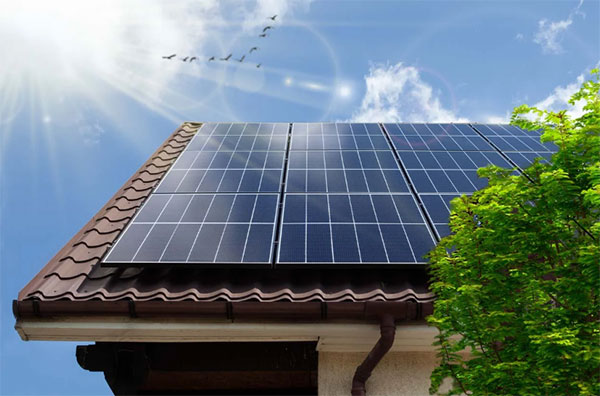
Challenges Faced by Solar Companies
The global shift towards renewable energy, especially solar, paints an optimistic picture. Yet, beneath this bright façade, solar companies grapple with a multitude of challenges that span regulatory, technical, and market-related domains. These challenges, while substantial, are also the driving force behind the industry's innovation and resilience.
Regulatory and Policy Hurdles
Government policies play a pivotal role in the expansion or limitation of solar energy adoption.
- Inconsistent Subsidies: Government subsidies have been instrumental in propelling solar energy to the mainstream. However, these subsidies are not consistent across regions or over time. For instance, a sudden reduction or elimination of a subsidy can substantially raise installation costs, slowing market growth.
- Permitting Delays: In many areas, the permitting process for solar installations remains tedious and time-consuming. These bureaucratic delays can stretch installation times, increase costs, and frustrate consumers.
- Grid Integration Policies: As solar energy becomes a significant part of the energy mix, seamless grid integration becomes crucial. However, outdated grid infrastructure and lack of clear policies can impede this integration.
Emerging Competition and Market Dynamics
The lucrative nature of the solar industry means it attracts a bevy of players, leading to intense competition.
- Price Wars: With the influx of solar companies, especially from regions with lower manufacturing costs, there's a persistent downward pressure on prices. While beneficial for consumers, this can squeeze profit margins for companies, especially those with higher operational costs.
- Shifting Demand: As certain markets reach solar saturation or as government policies change, demand can shift dramatically. Companies need to be agile, adapting to these dynamic market conditions to stay afloat.
- Overcapacity: The enthusiasm to tap into the solar boom has led some regions to overproduce solar panels, leading to oversupply. This overcapacity can further depress prices and impact the viability of some companies.
Technical Challenges and Limitations
Despite advancements, solar technology is not without its limitations.
- Efficiency: Current commercial solar panels have efficiency rates between 15-20%. While this is a significant improvement from earlier models, there's still much room for growth. Achieving higher efficiency is both a challenge and an opportunity for research and development.
- Energy Storage: While solar panels can produce energy during the day, storage solutions for nighttime use or cloudy days remain a concern. Current storage options, like lithium-ion batteries, are improving but can be expensive and have limitations in capacity and lifespan.
- Materials and Longevity: The quest for more efficient solar panels often means exploring new materials. Some of these materials might be rarer or more expensive. Additionally, ensuring these new materials don't compromise the panel's lifespan is a technical challenge.
Facing these challenges head-on is imperative for solar companies. While they present obstacles, they also offer opportunities for innovation, differentiation, and growth. As history has shown, industries that navigate their challenges with agility and innovation often emerge stronger and more resilient.





